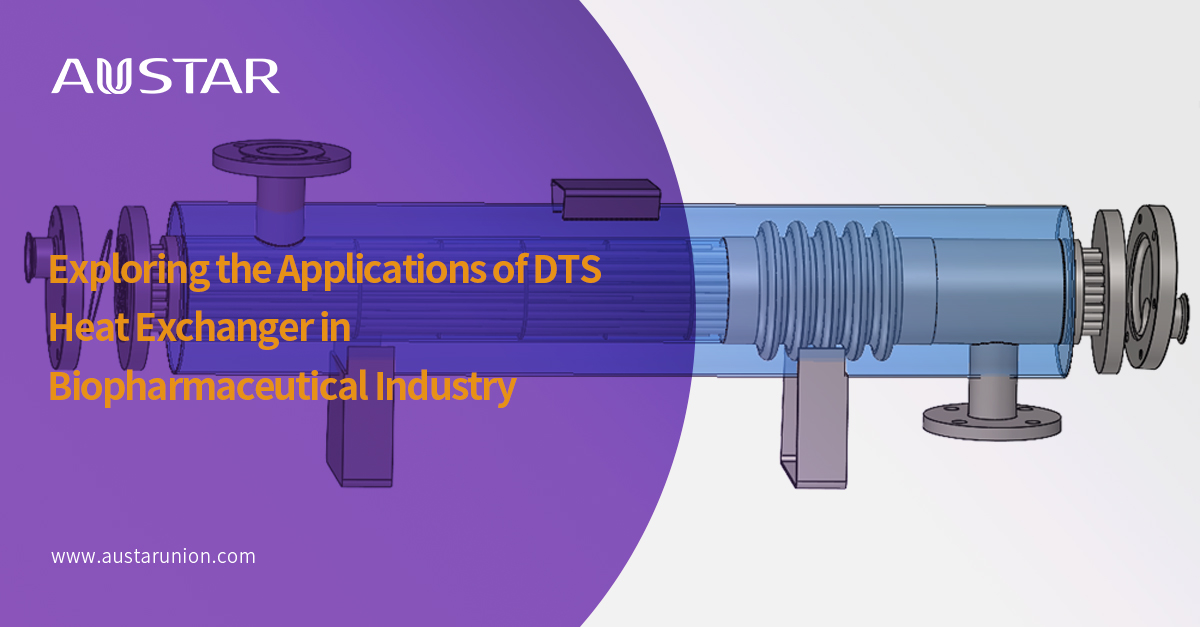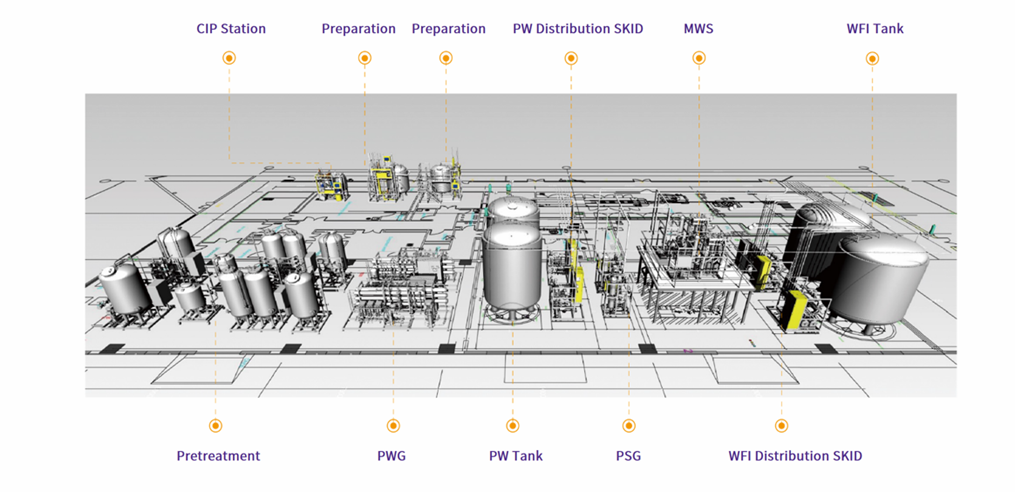Exploring the Applications of DTS Heat Exchanger in Biopharmaceutical Industry
News & Insights2023-10-13
To prevent cross-contamination resulting from system leakage, the United States FDA recommends in its "GUIDE TO INSPECTIONS OF HIGH PURITY WATER SYSTEMS" that DTS heat exchanger is a preferred choice otherwise pressure gauges shall be installed to constantly monitor pressure differentials to ensure that the higher pressure is always on the clean fluid side; ASME BPE "Bioprocessing Equipment" guidelines, outlines relevant requirements for the design, manufacturing, and inspection of DTS heat exchangers; In addition, the structure design of the DTS heat exchanger can meet relevant requirements of the CIP and SIP easily, therefore the DTS heat exchanger is widely used in the biopharmaceutical industry.

DTS heat exchanger transfers heat from hot fluid to cold fluid, which is mainly composed of shell, inner and outer tube sheets, tube bundle, channel covers, baffles, etc. During heat exchange, one fluid enters from the tube-side inlet, flowing and transferring heat in the tube bundle, and flows out from the tube-side outlet; the other fluid enters through the shell-side inlet, flowing in the shell, and finishes heat transfer through the contacts with the outer wall of the heat exchange tube, and finally flows out from the shell-side outlet.
1 Application of DTS heat exchanger in water system
1.1 Pretreatment unit: The function of Pretreatment unit is to pretreat feedwater to ensure the water quality meets the requirements of reverse osmosis. Out of system design and cost concern, normally the Plate-and-frame-type heat exchanger are more frequently used compared to DTS heat exchanger.
1.2 Preparation unit: The function of Preparation unit is to continuously and stably purify incoming water into pharmaceutical water conforming to pharmacopoeia requirements. The PW preparation generally adopts the plate-and-frame-type heat exchanger (DTS heat exchanger will sometimes be adopted for special cases). For WFI preparation, the entire preparation together with the DTS heat exchanger are provided in a modular design, such as MULTIPLE-EFFECT WATER STILL.
1.3 Storage and distribution unit: This unit consists of the storage unit, distribution unit and point-of-use piping unit. As the core part of the entire storage and distribution system, distribution unit is where the DTS heat exchangers are most commonly used. Utilizing a certain buffering force, the distribution system can transport pharmaceutical water to the destined process positions, to guarantee the water flow, pressure, temperature and quality conform to the requirements.

1.3.1 PW storage and distribution unit
Pasteurization
?Working Mode: Batch-style
?Process conditions: 25℃→80℃, Atmosphere pressure/Generally 3bar (g) plant saturation steam heating
?Fluids: Purified Water/ Plant Steam
Maintain system temperature
?Working Mode : Batch-style
?Process conditions: about 25℃, 2~3bar (g) / Generally 3bar (g) chilled water cooling
?Fluids: Purified water / Chilled water
POU piping unit:
?Working Mode: instantaneous working condition (ex, a variety of uses such as preparation points)
?Process conditions: according to the actual process conditions
?Fluids: Purified Water/Cooling media or Heating media
Storage unit:
?Generally DTS heat exchanger is not used
?
1.3.2 WFI storage and distribution unit
Superheated water sterilization
?Working Mode: Batch-style
?Process side conditions: 80 ℃ → 120 ℃, 1~2bar (g) / General 3bar (g) plant saturation steam heating
?Fluids: water for injection/Plant steam
Maintain system temperature
?Working Mode: Batch-style
?Process conditions: 70~80 ℃, Atmosphere pressure/ General 3bar (g) plant saturation steam heating
?Fluids: water for injection/Plant steam
POU piping unit:
?Working Mode: instantaneous working condition (Points for cleaning appliances, points for preparation, etc.)
?Process conditions: according to the actual process conditions
?Fluids: Water for Injection/Cooling media or Heating media
Storage unit:
?Generally DTS heat exchanger is not used
2 Application of DTS heat exchanger in CIP station
CIP
?Working Mode: Batch-style
?Process side conditions:
60 ℃ ~85 ℃ (all system detection points reach the required temperature)
Pressure required 1.5~3bar (g)(ensure the flow rate of 1.5~2m/s at the far end of the system and spray balls can work properly)
The other side: generally 3bar (g) plant saturation steam heating
?Fluids: Purified water lye(2%NaOH) /Plant steam
SIP
?Mode: as a channel
?Process side conditions: ≥121 ℃, 2~3bar (g), or client's specific requirements
?Fluid : Pure steam
?
3 Application of DTS heat exchanger in Medium Preparation
?Working Mode: instantaneous working condition/ Batch-style
?Process side conditions:
Instant cooling or heating according to the actual process requirements
Cycle cooling or heating according to the actual process requirements
Pressure required 1.5~3bar (g)
The other side: generally 3bar (g) plant saturation steam heating or cooling media cooling
?Fluids: WFI or prepared medium/ Plant steam or cooling media (chilled water, glycol, etc.)
4 Other applications
?For Bioreactor unit, such as tail gas condenser
?For Fermenter unit, such as tail gas condenser
?For Pure steam generator, such as preheater etc.
DTS heat exchangers are also adopted in above units, but are modularly provided with above units as a whole.
The mentioned working mode of heat exchanger are defined by the temperature state. If the temperature is stable namely the heat flow and the temperature in the specified area does not change with time which is common in POU piping unit, the work condition will be classified as instantaneous condition. If the temperature is unstable namely the heat flow or temperature on the heat transfer surface changes with time, such as Preparation medium (tanks with agitators), CIP cleaning tanks with agitators, wherein the required heat exchange area is large, the heat exchanger is set outside the container, and the pump is used for external circulation heating or cooling, the work condition will be classified as batch-style.







 Search
Search 中文
中文







